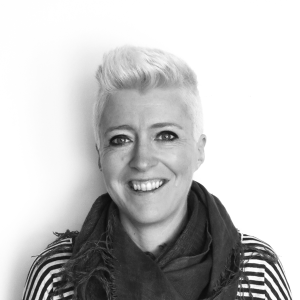
“How are you?” How Conversation Drives Healthy Behavior Changes
To a surprisingly large degree, poor health depends on the choices we make in our daily lives: the excess of food, drink, and drugs we consume, insufficient physical activity and sleep, high stress and low attention to our wellbeing.
Promoting behavior change at the individual level is increasingly necessary to help governments and healthcare systems tackle the growing burden of diseases caused by our lifestyle choices. According to the World Health Organization, about half of the deaths that occurred in 2012 because of non-communicable diseases (16 million out of 38 million) were premature and could have been prevented, mostly by building better habits. This means that, by pulling the right levers, we could enable millions of people to live longer and experience an increased quality of life.
Helping people to change their behavior is no easy task; humans make decisions in a non-linear and complex manner. Contextual factors, such as socio-economic status, family dynamics, and personal outlook or life aspirations, deeply influence everyday choices.
At frog we have worked with several clients to shape solutions that support prevention and management of chronic conditions. These projects have taken a person-centric approach by attempting to understand people’s needs and co-designing solutions that fit their life, which is often what is at stake.
While adopting this perspective, we found that some of the principles and tools at the core of our design approach—such as active listening, interviewing techniques, co-creation and prototyping activities—helped increase awareness and eventually encouraged people to make healthier decisions. Whether you are part of an organization developing healthcare applications, a physician searching for better ways to interact with your patients, or anyone else hoping to influence healthful behavior changes, we have three recommendations based on our work in this space.
1. Have a one-to-one conversation that starts with active listening.
Programs and campaigns that aim to increase health awareness often make extensive use of mass media, targeting broad audiences with shocking content. In our work, we have found that standardized or jarring messages are often perceived as judgmental and irrelevant to individuals. On the other hand, we see that a caring relationship between healthcare providers and patients has the potential to help people become more aware of the issues that affect them, which encourages them to take action.
illustration_1_howareyou_BUPA
During a recent research collaboration with Bupa in northwest England, we experimented with ways to engage people in talking about their health. We started the conversation by listening to people’s stories—always trying to elicit motivation directly from them—and encouraging them to make an argument for their desired outcomes. People found the conversation increasingly relevant as the interaction unfolded, and because they felt cared for, they willingly interacted more openly.
Additionally, we found that people who are more or less invested in their own health need a different amount of time to process, digest, and reflect on the information that they have been given. For this reason, one-to-one conversations proved to be the most effective strategy for influencing behavior change.
photo_1_howareyou_BUPA
Tips & tricks:
- Stay empathetic and remain open to different perspectives. Empathy is not about knowing how something feels or showing that you can understand the person talking. Empathy starts with a sense of wonder and willingness to learn how it actually feels to be that person.
- Listen to understand, not to respond, and respect silence.
- Use mediating tools, such as ‘aspiration cards’ to make the person feel comfortable and enable a conversation that has a tailored and flexible pace.
2. Make the person the protagonist of their own story, and co-create solutions that fit his/her daily challenges.
Co-creating health means moving away from the traditional relationship between passive patients and expert health professionals, to one where both parties work together as active partners. There are many definitions and many facets of co-creation; our work is demonstrating that people are more likely to adopt a care plan and follow it when they are involved as active co-creators throughout the process.
illustration_2_howareyou_DRAWING_DIAGNOSIS
Together with Dylan Collins, a Ph.D. student at the Centre for Evidence Based Medicine at Oxford University, we designed a solution to improve a standard five-minute consultation between a healthcare provider and a patient for assessing cardiovascular risk. We created the Cardiovascular Risk Consultation toolkit, a series of tools that support the doctor and patient in creating a shared plan.
Using this toolkit, the doctor listens to the patient, without interruption or judgement. The doctor proceeds to explain concerns and sketches potential solutions. At this point, the patient evaluates the pros and cons of each option and chooses the solution that fits his or her daily challenges and personal aspirations. Finally, they sketch a shared plan together.
photo_2_howareyou_DRAWING_DIAGNOSIS
Tips & tricks:
- Guide people to actively reflect upon their health and state their expectations and desired outcomes.
- Sketch options in real time, detailing both pros and cons of each option, and let the patient decide what to do next.
- Stay open and flexible in adjusting the approach in light of each person’s attitude.
3. Have an on-going conversation that enables people to experience the change in their everyday lives.
A one-time conversation with your doctor, urging you to be more active and eat better, is often only effective for a few days. Continuous coaching is required. A personal coach aims to create synergistic relationships that help people tap into their full potential. We discovered that accountability, expertise sharing, and a motivational approach are the cornerstones of empowering solutions. Well-designed mHealth solutions democratize these experiences, making them accessible to all.
illustration_3_howareyou_AMICOMED
We worked with AmicoMed and HealthWare to define a mobile coaching experience for patients diagnosed with hypertension, with the goal of achieving behavior changes that would measurably lower patient’s cardiovascular risk. Some mobile coaching experiences focus on one ideal path to success, but life is turbulent, and patients can find themselves quickly drifting away from rigid paths with no way to get back on track. frog focused on designing a dynamic experience where each interaction strengthens the doctor-patient relationship, and the patient can navigate their way back to the desired path at any time.
photo_3_howareyou_AMICOMED
Tips & tricks:
- Make sure to learn enough about each user’s needs and real-time situation to provide personal and dynamic advice.
- Combine action-oriented coaching with relevant information so your user understands why they are taking certain actions.
- Balance the tone of your delivery with respect to gravity and fun, inspiration and sincerity to achieve intrinsic motivation.
The increased availability of digital tools has resulted in many attempts to influence behavior change simply by using technology to tell people what to do and when to do it. However, at frog our work has shown us that fostering behavior change does not happen by providing people with a kit of tools, but instead requires supporting them on a personalized and sometimes imperfect journey. We have observed that behavior change starts with active listening during a one-to-one conversation, where the person is the protagonist and is encouraged to co-create a solution that fits his or her daily challenges. By turning this personalized conversation into an ongoing dialogue, people are inspired and motivated to commit to the ongoing changes that will improve their health over time.

Alec Momont is an Interaction Designer at frog. Specialised in Medical Design, he works on healthcare challenges such as Hypertension, Hepatitis C, Vision Loss, Blood Diagnostics, Drug Usage and cardiac arrests.

Elena is a design researcher, especially passionate about creative facilitation with kids and social innovation projects. She is a voracious reader, a food-experimenter and a Doctor Who addict!

Marina is a visual designer at frog Milan. She is in love with typography, iconography, color, grids, paper and pixels.

Stefania is passionate about shaping solutions for and with people in the Healthcare space, bringing a proven experience in Human Centred Design, Visual Thinking and Product Strategy.
We respect your privacy
We use Cookies to improve your experience on our website. They help us to improve site performance, present you relevant advertising and enable you to share content in social media. You may accept all Cookies, or choose to manage them individually. You can change your settings at any time by clicking Cookie Settings available in the footer of every page. For more information related to the Cookies, please visit our Cookie Policy.